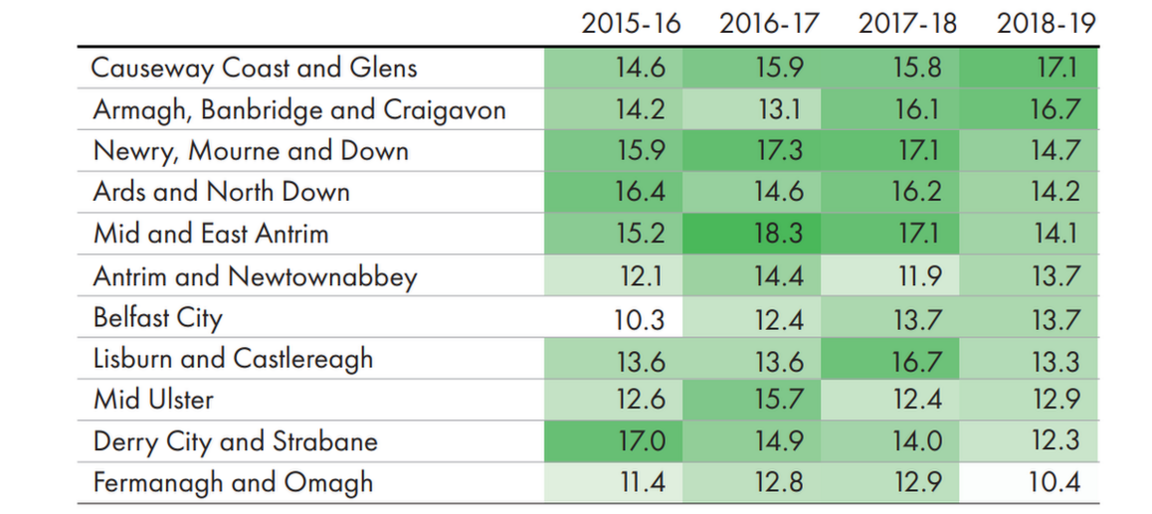NI council sick leave highest in the UK
- Published

Sickness absence levels in Northern Ireland councils are the highest in the UK, auditors have found.
Figures show an average of almost 14 days per employee in 2018-19 - a 13% increase in five years.
The findings come from a joint report by Northern Ireland's two public sector auditors.
Teachers in Northern Ireland also take more sick days than other parts of the UK, according to the report.
Auditor General Kieran Donnelly and Local Government Auditor Pamela McCreedy warned that sickness absence is placing a strain on services.
Overall sickness absence in the Northern Ireland civil service has also increased by 10% in five years, with staff off for an average of almost 13 days annually.
Northern Ireland's two public sector auditors said the levels are almost double that within the civil service in England.
It comes after a report last week by the auditor general revealed how Northern Ireland's civil service is struggling to cope because of a crisis in staffing levels with almost 1,500 unfilled vacancies.
According to the figures published in the latest, report council workers in 2018/19 took on average 14 days off because of sickness.
That compares to 11 days for councils in Scotland and eight in England and Wales.
the auditors point to long term absences in many cases caused by mental health illness as being a key reason for the high levels of sickness. Northern Ireland has the highest rates of mental illness in the UK with one in five adults experiencing a mental health problem at any given time.
The age profile of those who work in councils and the wider civil service is another contributing factor. Over 40 per cent are over the age of 50 and as a result are more prone to develop health complication.

This table shows the average number of days lost due to sickness across NI councils
The highest level of sickness absence among council workers was recorded in Causeway Coast and Glens, with 17 days lost to sickness per employee, while the lowest was in Fermanagh and Omagh council were on average 10 days were lost.
"High levels of sickness absence within the public sector are not a new phenomenon. However, this report finds few signs of sustained improvement," said Mr Donnelly.
"It is time for public sector organisations to make a concerted effort to reduce the level of sickness absence and to develop a consistent approach to managing attendance."
Mr Donnelly said a "strong attendance culture needs to be embedded" across the public sector and he called for a heavy focus to be placed on long term absence with preventative and early intervention measures put in place.
"Sickness absence in NI councils consistently ranks as the highest in the UK, with no indication of significant improvement," said Mr Donnelly.
"When significant numbers of staff are unable to work because of sickness, the impact on service delivery including delays, increased workloads, lost productivity and additional financial costs to cover absences is likely to be considerable."
The auditors also report that teachers in 2018/19 took almost 10 days off because of sickness which is an increase of 10% in the past five years.
The figure is also the highest in the UK with teachers in Scotland taking six days off while four days per employee were lost in England.
he auditors point to long term absences in many cases caused by mental health illness as being a key reason for the high levels of sickness. Northern Ireland has the highest rates of mental illness in the UK with one in five adults experiencing a mental health problem at any given time.
The age profile of those who work in councils and the wider civil service is another contributing factor. Over 40 per cent are over the age of 50 and as a result are more prone to develop health complication.
- Published18 November 2020
